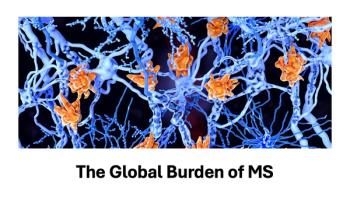
MS drugs make major advancements
There is new hope for patients with multiple sclerosis (MS) after positive data on Gilenya and the investigational drug ocrelizumab was presented at the Congress of the European Committee for Treatment and Research in Multiple Sclerosis (ECTRIMS) in Barcelona, Spain.
There is new hope for patients with multiple sclerosis (MS) after positive data on Gilenya and the investigational drug ocrelizumab was presented at the
Related:
Data from 2 identical studies (OPERA I and OPERA II) in people with relapsing MS, which affects approximately 85% of people with MS at the time of diagnosis, showed ocrelizumab was superior to interferon beta-1a (Rebif), a well-established MS therapy, in reducing the 3 major markers of disease activity over the 2-year controlled treatment period.
Related:
“Ocrelizumab is the first investigational medicine to significantly reduce disability progression in people with relapsing MS and people with primary progressive MS – a form of MS with no approved treatments,” said Sandra Horning, MD chief medical officer and head of global product development for Genentech. “We are eager to work with regulatory authorities to bring this investigational medicine to the MS community as soon as possible.”
In addition, Novartis said its 2 phase 3 trials reinforced the long-term efficacy profile of
In the first year, 27.1% of patients on Gilenya achieved NEDA-4 compared to 9.1% on placebo. Switching from placebo to Gilenya after year 2 doubled the proportion of patients achieving NEDA-4 (12.7% to 27.4%) in year 3. Of those patients on continuous Gilenya treatment, 31.2% to 44.8% had NEDA-4-status in each of the years 3 to 7.
A separate follow-up analysis of data from the FREEDOMS and FREEDOMS II trials also confirmed for the first time that assessment of RMS based on NEDA-4 allowed physicians to better predict long-term disability and brain shrinkage outcomes than just assessing relapses, MRI lesions and disability progression.
“Better understanding of the course of a person’s MS through assessment of NEDA-4 can help physicians identify the optimal, effective treatment approach as early as possible for their patients,” said Vas Narasimhan, global head of development for Novartis.
NEDA-4 status over the first year was a significantly better predictor of disability and brain shrinkage over the subsequent 5 years, as measured by patients reaching a stage of severe disability or having more than 0.4% mean annual brain volume loss. The findings support the importance of assessing RMS with NEDA-4 to enable a more reliable prediction of long-term disease outcomes,
Related:
Meanwhile, in a separate Genentech study, ocrelizumab significantly reduced the progression of clinical disability in patients with PPMS, a form of the disease marked by steadily worsening symptoms and typically without distinct relapses or periods of remission. Additionally, the study met other secondary end points of reducing the time required to walk 25 feet, the volume of chronic inflammatory brain lesions, and brain volume loss.
Genentech plans to pursue marketing authorization for ocrelizumab in relapsing MS and in PPMS, submitting data to FDA in early 2016.
Newsletter
Get the latest industry news, event updates, and more from Managed healthcare Executive.






















































